Draw-in happens. It is a natural part of weaving. Sending a weft thread across the warp, weaving over and under, naturally pulls the warp threads closer together–this is draw-in. But excessive draw-in ruins selvedges, causes warp ends to fray and/or break, and wastes time because it creates problems. The width across the fell line needs to be the same as the width of the warp in the reed. If the cloth is narrower at the fell line, there is abrasion on the outer warp ends from the reed, as the beater comes to the cloth.
Two things work together to help prevent excessive draw-in:
1) Angling the weft. Placing the weft across the warp at an angle adds extra length to the weft, which helps to accommodate for the natural draw-in.
2) Using a temple (stretcher). The purpose of a temple is to maintain consistency in the width of the cloth. It does this by “stretching” the cloth out, holding it in place with little spikes on each end of the tool. Moving the temple frequently uses the tool to its best advantage. I move mine about every inch of weaving. For more instruction on how to set a temple, please see one of my most popular posts, Tools Day: Temple Technique.
I weave with a temple more often than not. The temple must be set properly, to the precise width, so I have several sizes in my growing collection of temples. Sometimes it works to combine two different sizes to get the measurement that is needed.
My first temple was a make-do tool that I used with my rigid heddle loom on lightweight weaving. It is not adjustable, so it only works with one specific warp width.
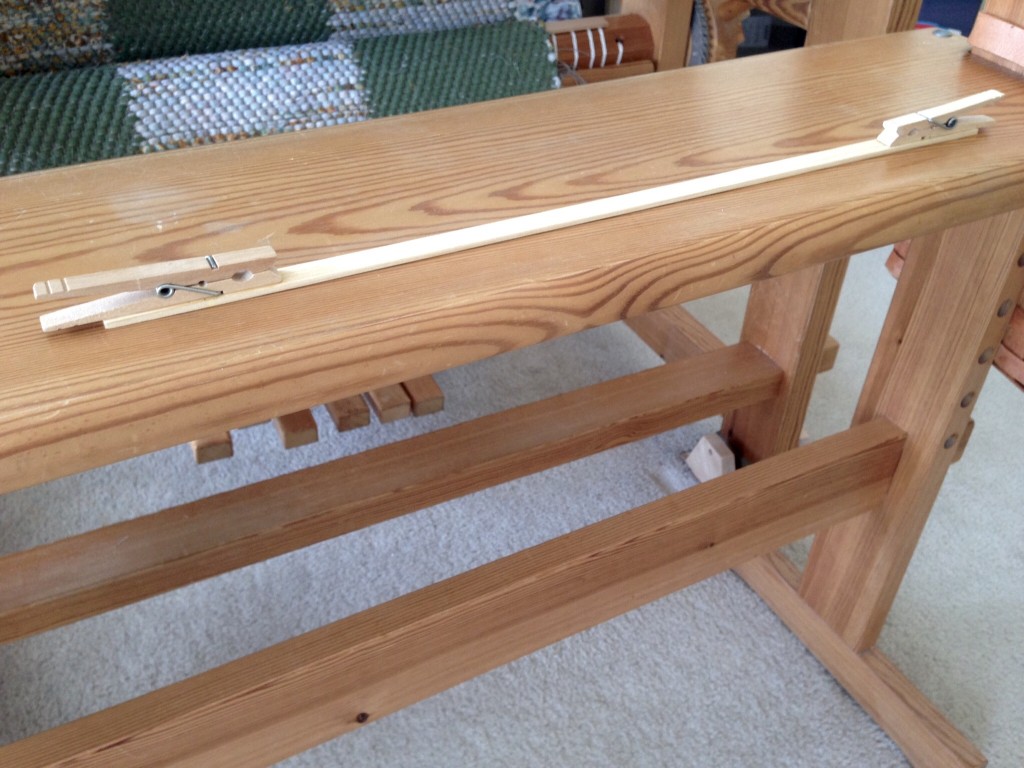
My wooden temples are from Glimåkra. They serve me well, and are the ones I use most often. Since they are adjustable, they cover a wide range of possible widths.
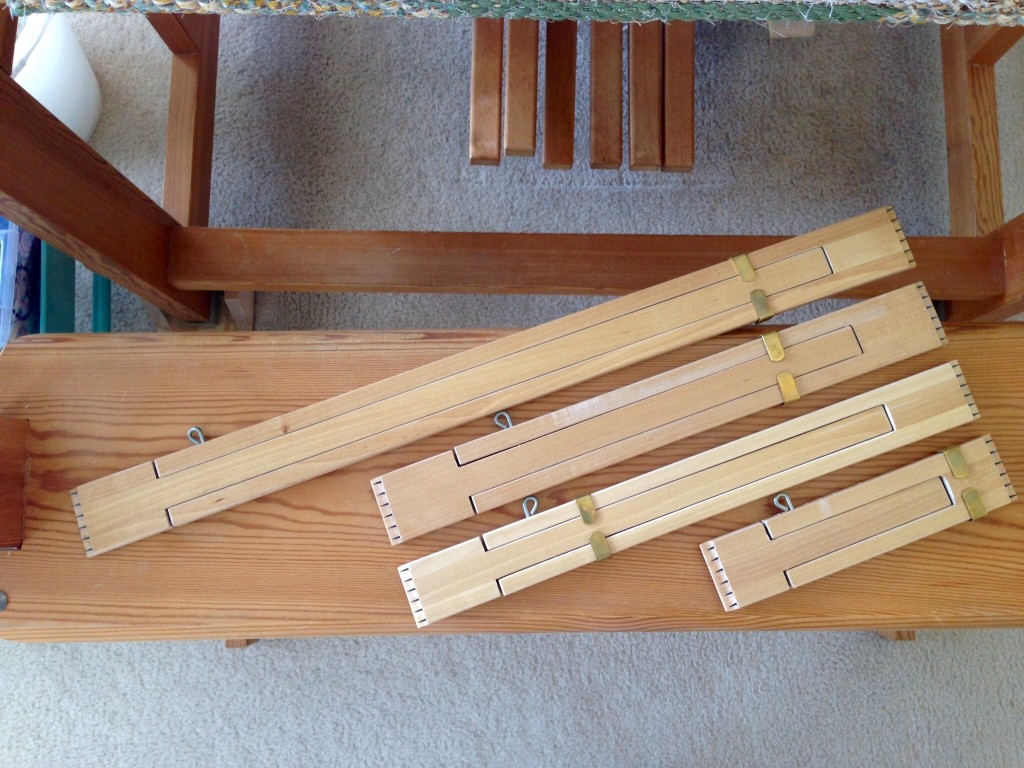
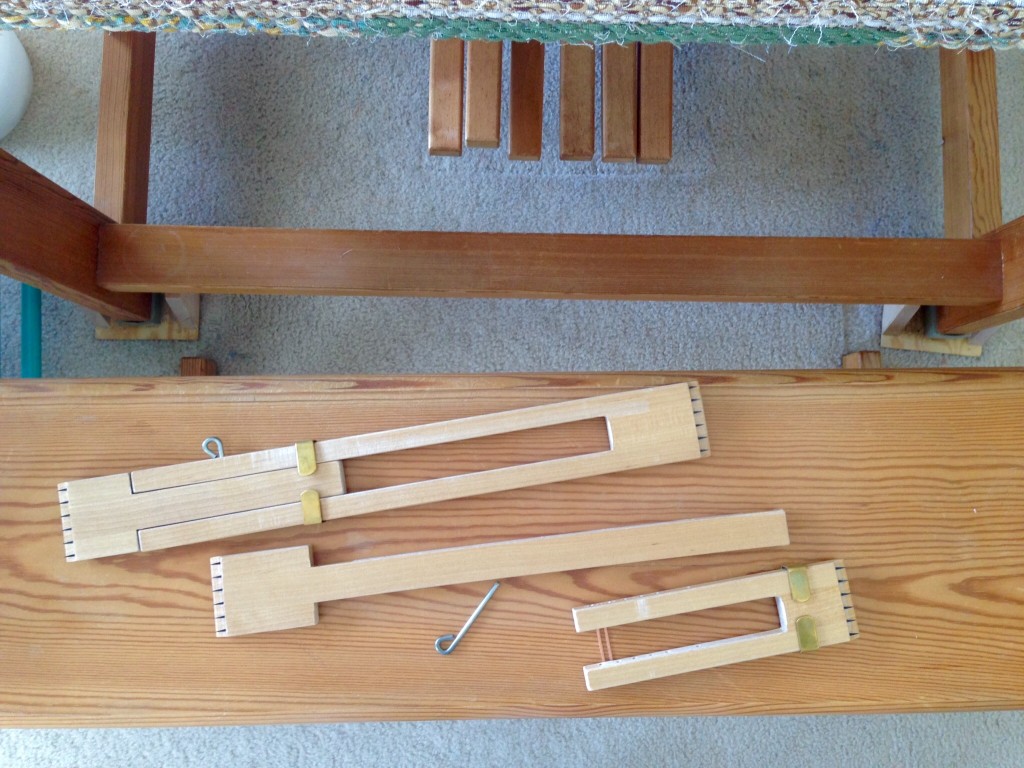
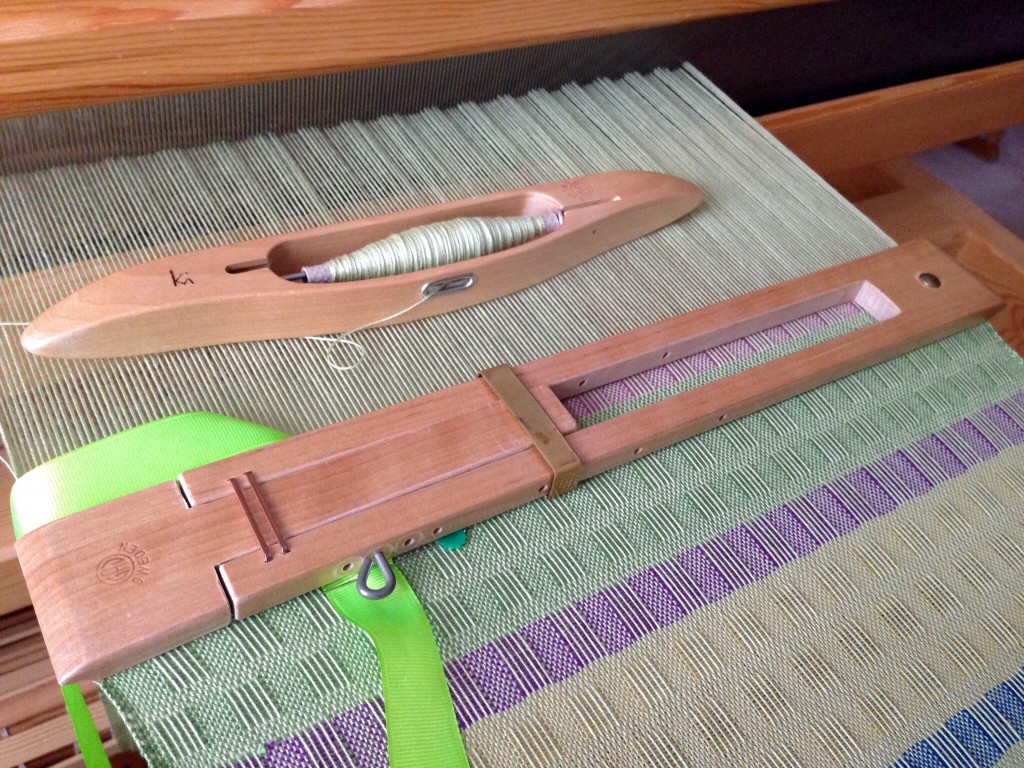
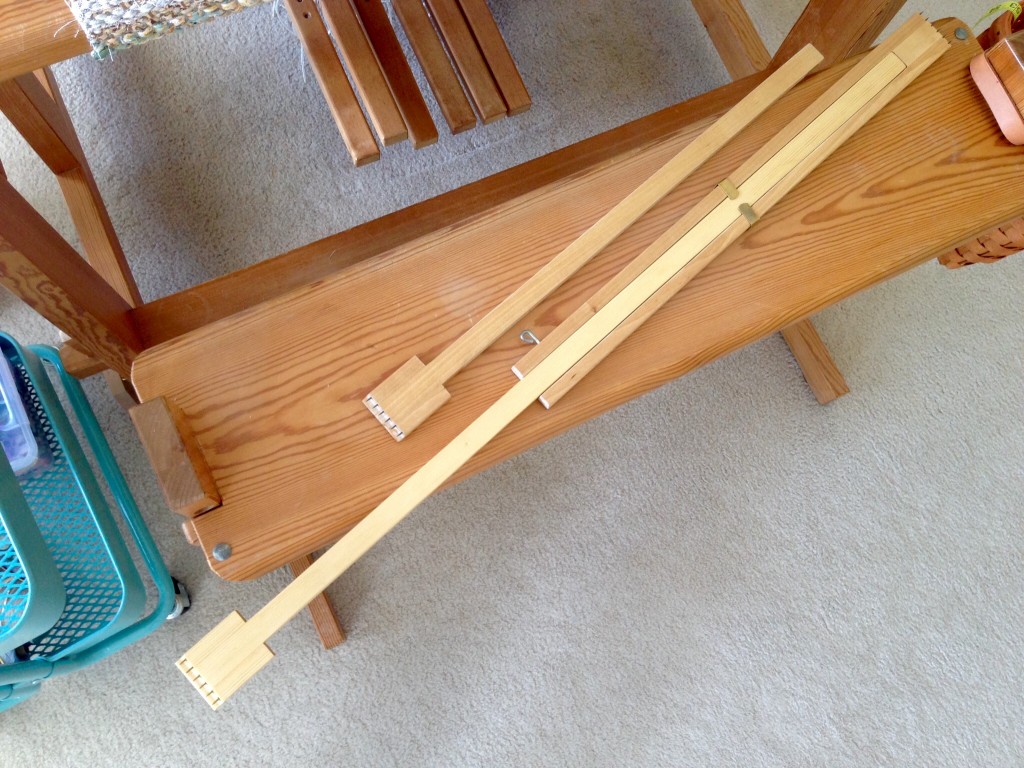
The metal temples are heavier, with thicker teeth, and work well for coarser weaving, especially rugs.
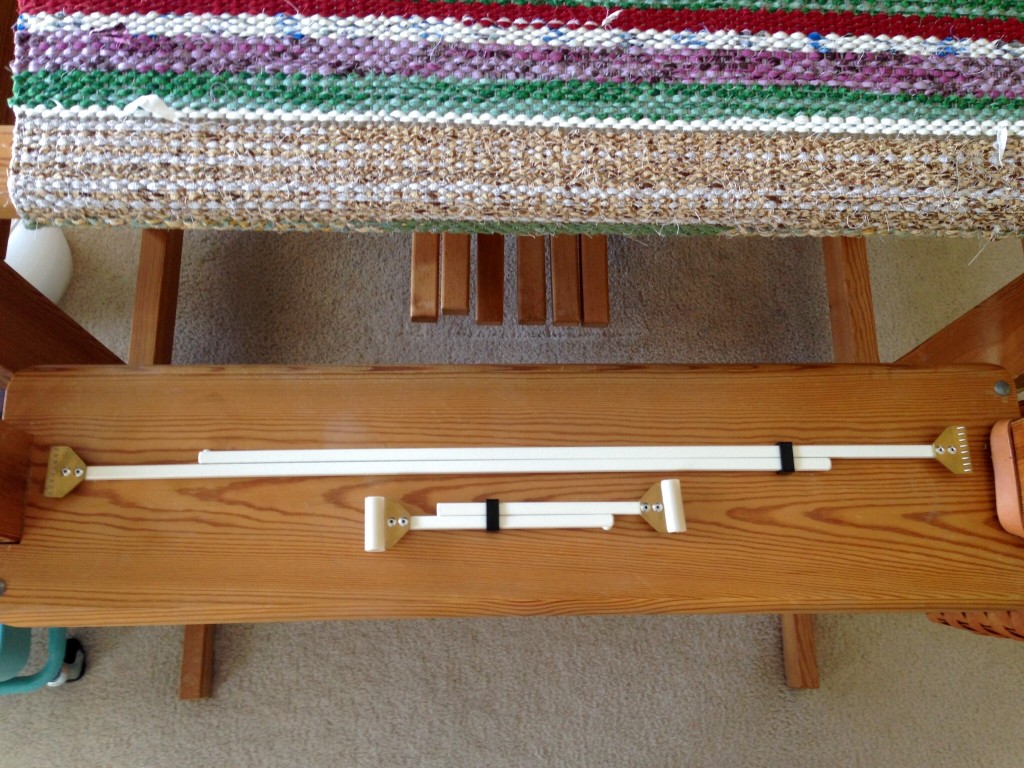
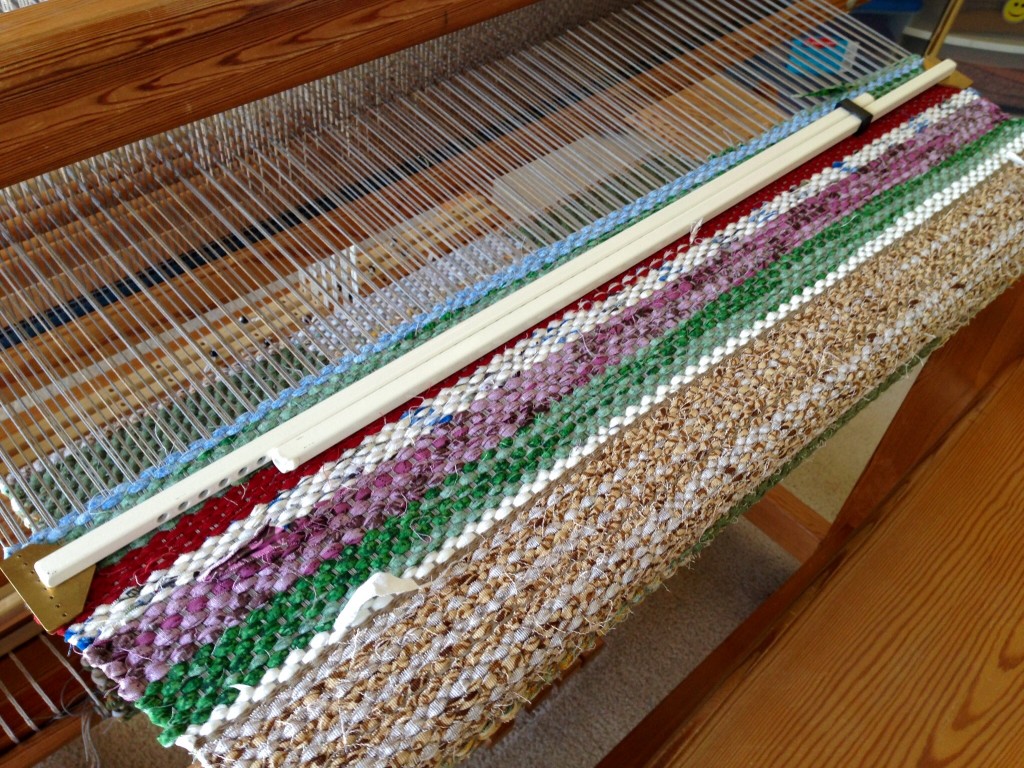
May your selvedges shine, and your broken ends be few.
Happy Weaving,
Karen

I have a temple / draw-in question. I’m weaving towels using 8/2 cotton at 18 epi. I’ve been using a wooden temple from Glimåkra similar to yours. I match the temple width to the width of the warp in the reed. I’ve been throwing the shuttle leaving a bubble, changing shafts, and then beating. Things start out fine but as the weaving continues the draw-in continues to get worse so that I have to abandon the temple as I’ve run out of adjustment. Then I attach weights to the selvedge edges to try and keep the draw-in in check. The edges get compressed looking. If I’m using colored weft with a white warp the edges even turn white as things get tighter there. Maybe I need to get another wooden temple and substitute the smaller one as I continue weaving after the first one runs out of adjustment. It’s just a lot of draw-in.3″ in a 20″ width measured in the reed. Help!
Thank you,
John
Hi John, just know you’re not alone. Most weavers have struggled with the same things you describe; at least I know I have.
I think you will resolve the problem if you leave more weft in the shed. Instead of a bubble, put the weft at a 45 degree angle. I suggest doing some sampling, and experiment with the weft. See what happens if you increase or decrease the angle, and find the optimum angle that keeps your weaving at the width that matches the warp in the reed.
The problem with adjusting the temple, or changing to a smaller size temple, is the outer warp ends will get too much abrasion from the reed. 8/2 cotton may be able to handle that, but if you weave with something finer, or more delicate, like linen, your ends will break like crazy. Ask me how I know. 🙂
Any other words of advice from my weaving friends here? Please leave your suggestions, too.
All the best,
Karen
I find I get the best selvedges by beating the weft with an open shed as well.
Very good point, Sue! I do the same. Thanks for leaving your helpful tip!
Karen
It takes a little practice, but you can prevent draw in by
! throw the shuttle at a 30-40 degree angle.
2, insert your pointer finger in the shed 3-4 warp threads
3.grasp the edge,between your thumb and pointer finger
4. flick your wrist away from the weaving
5. take your feet off the pedles and beat.
If you find one edge is not as nice as the other slide your butt to the not so good side just a little. It works every time and you don’t have to rely on another “gizmo” to get perfect edges, linda
Linda,
Thanks for sharing your technique. I admire anyone who can get perfect selvedges without using a temple!
Happy Weaving,
Karen
Thanks everyone for the helpful suggestions. I really appreciate it !
John
Happy Thanksgiving! How are you storing your weaving temples? Thanks!
Hi Deb, I’m sorry I missed your comment earlier.
I store my weaving temples in a drawer in my workroom. The temples are lined up on their sides by order, from shortest to longest. My couple of temples that are too long for the drawer stand on end in an out-of-the way bucket in a corner of the room.
Karen